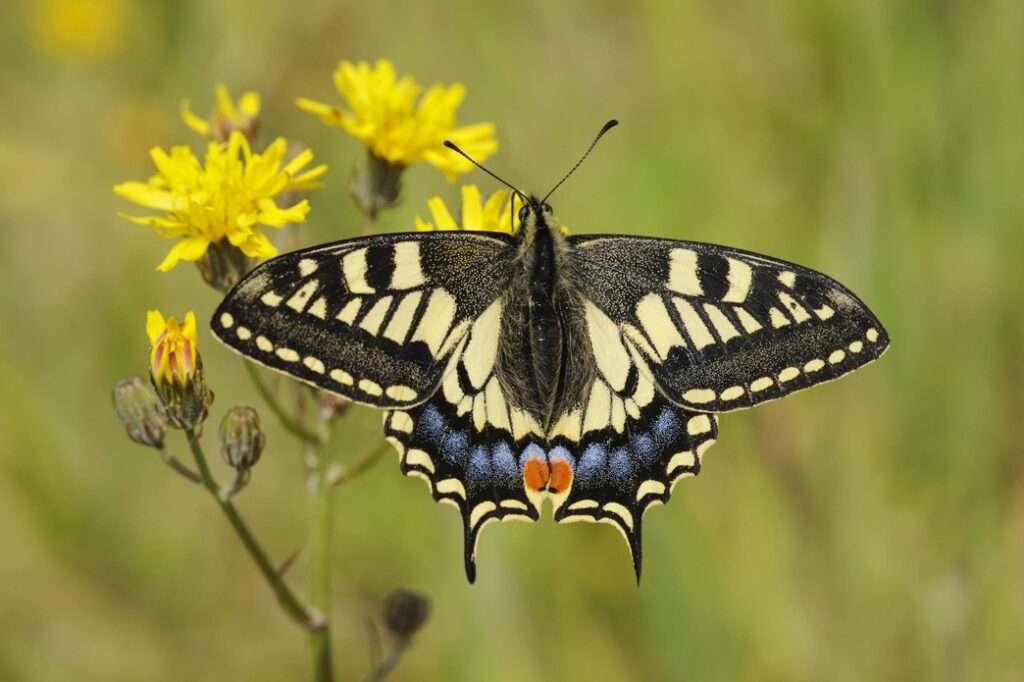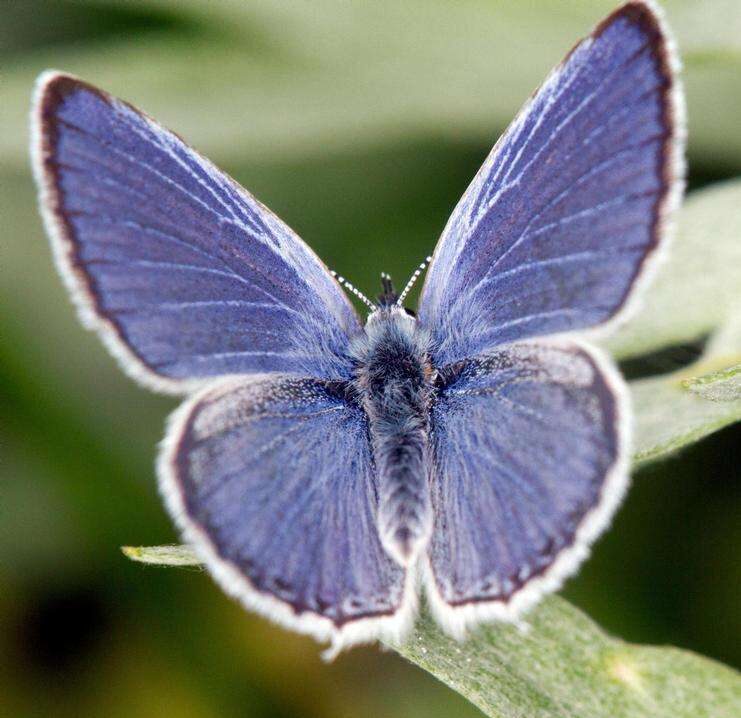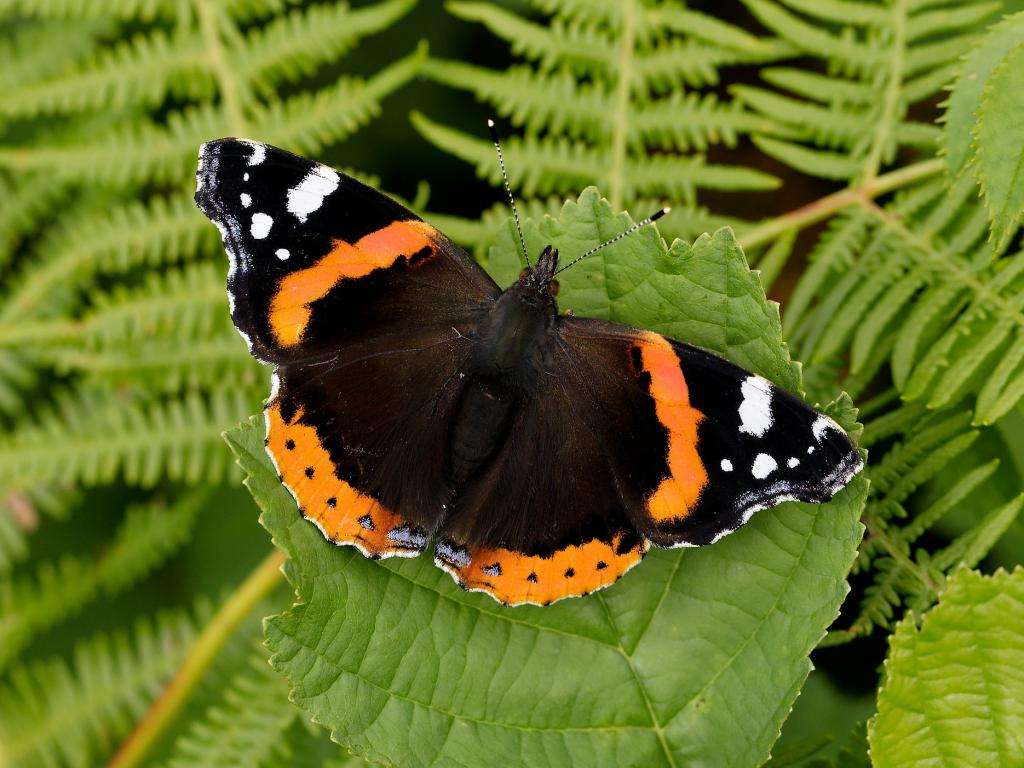
Amazing Facts
- Egg, larval, pupa, and adult are the four phases of a monarch butterfly’s life cycle.
- Monarchs are easily recognized because of their distinctive black, orange, and white hue.
- One of the major challenges to monarchs is the loss of their habitats, and during migration, they may travel thousands of miles.
- Monarch females use milkweed plants to lay their eggs.
Appearance
The wingspan of an adult monarch butterfly is roughly four inches. Their bright orange upper wings have a broad, black border with white dots that is interspersed with black veins.
To blend in with tree bark, the underside of their wings are painted a duller orange tint. Males have a black patch on each of their rear wings, and they are slightly larger than females. The body of a monarch caterpillar is covered in black, white, and yellow bands, as well as two long black filaments near the head and two shorter filaments near the back.
Feeding
Monarch adults search for flower nectar as monarch caterpillars eat milkweed plants.
Predators
Due to the buildup of deadly chemicals produced by milkweed plants in their bodies, the brilliant coloring of adults serves as a warning to potential predators that the species is poisonous. However, other invertebrates, such as wasps and ants, feed on caterpillars.
Habitat
The majority of the North American monarch population, which completes its northward migration via several generations, resides east of the Rocky Mountains. The area of the central United States where they are most numerous is a migratory flyway corridor. The habitat for monarch butterflies must have milkweed and flowering plants, whether it be a field, roadside area, open space, wet region, or urban garden.
Keeping as Pet
Well, it is true that keeping monarch butterflies as pets can result in stunning pets. However, there are conditions that must be met, including giving them plenty of room to fly, making nectar available when they are adults, and feeding milkweed while they are caterpillars. Although creating a butterfly garden is quite beneficial.
How to Raise Monarch Butterflies Indoors?
Keep your monarchs in a natural environment that offers all its advantages without the risky extremes. We keep our caterpillars in our three-season porch with the windows open, in a cage made of breathable mesh. This exposes developing monarchs to ambient temperatures and humidity levels without subjecting them to strong winds, persistent rain, or scorching sun.

Keep all containers away from the sun and in natural light. Every container should be cleaned once a day by taking out the leaves that have eggs or caterpillars on them, emptying the small excrement, wiping the container with water, adding fresh milkweed, and then putting the leaves back. A caterpillar doesn’t need to be removed from its leaf.
Table





